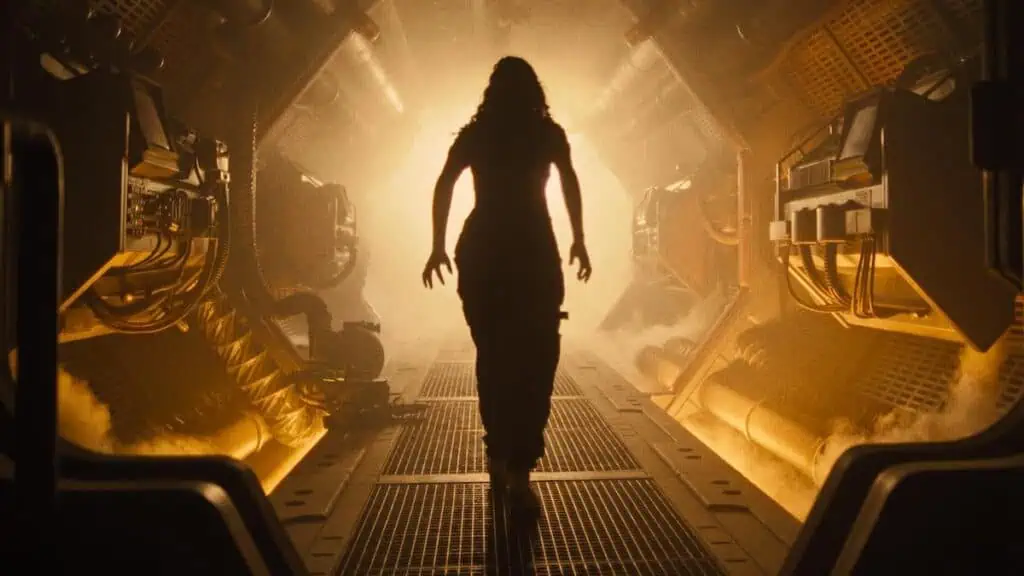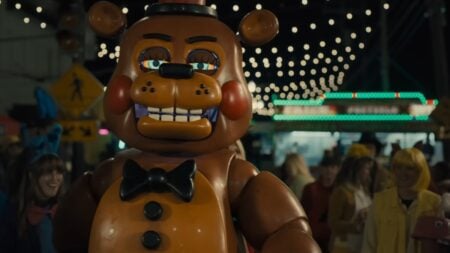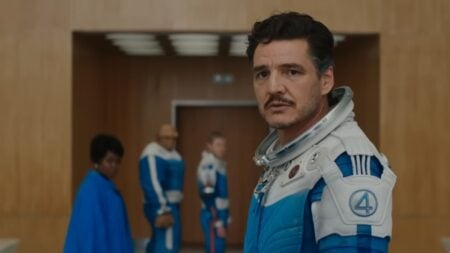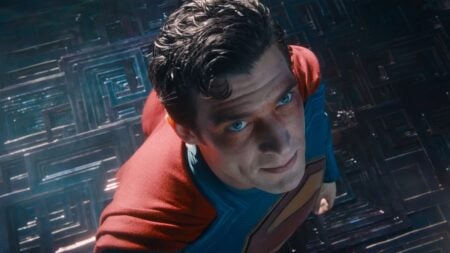Skip To...
Like the metamorphic monsters at the heart of the franchise, the Alien series has significantly evolved since its inception back in 1979. Over the course of 45 years, the beloved IP has waxed and waned giving fans mighty peaks and a few disappointing troughs. The latest addition from Fede Álvarez, Alien: Romulus, recently hit the big screen and it’s currently doing well debuting with a $108 million global box office. Buoyed by positive word-of-mouth and a strong critical reception, this is a back-to-basics return to the iconic sci-fi horror franchise’s blood-drenched roots, with a strong emphasis on that aforementioned H-word.
While Alien: Romulus is a creative and largely successful iteration, harkening back to the claustrophobic cosmic body horror of Alien — with some occasionally unnecessary fan service thrown in for good measure — there are still plenty of unanswered questions that remain even after the credits roll. So, strap yourselves in as we travel back to the darkened corridors of the Renaissance space station to shed light on some of the film’s most intriguing mysteries.
***Warning: Major Story Spoilers for Alien: Romulus follow***
How Did Big Chap Survive?
In Alien: Romulus‘s opening sequence, we see a Weyland-Yutani vessel rummaging through a wreckage in deep space. It quickly becomes clear that these are the supposed remnants of the Nostromo from the original 1979 pic. Amongst the floating debris, one strange object comes into view: a mysterious fossilised asteroid. Inside, it houses the xenomorph from the first movie. But how on earth did it survive for so long in the vast vacuum of space?
If you recall, the original xenomorph (which fans affectionately dubbed “Big Chap”) was shot with a harpoon by Ripley and blasted by the flames from Narcissus’ exhaust in the final act of Alien. Initially, it appeared that Big Chap had been “killed” by Ripley and was left pushing up the daisies as it floated forever in deep space. I mean, we’ve never seen a xenomorph withstand that sort of punishment before and live to tell the tale. However, what we discover in Alien: Romulus is that Big Chap actually survived the events of Alien and cocooned itself inside a mineral deposit to ostensibly place itself into a state of eternal hibernation.

For all intents and purposes, how xenomorphs sustain themselves has always remained a bit of a perplexing mystery throughout the series. Sure, we see xenomorphs “bite” into their prey, but it’s usually for self defense rather than to eat, right? In essence, they don’t appear to need food and warmth like humans, hence their lofty status as the “perfect organism.” As a result, it’s pretty feasible that Big Chap could’ve survived in deep space for this many years, especially if it was holed up in a piece of space rock, like a mosquito in amber from Jurassic Park.
What Exactly Is the Black Mutagen in the Lab?
First established in 2012’s Prometheus and later explored in 2017’s Alien: Covenant, the black mutagen re-appears in Alien: Romulus, albeit with a slightly tweaked effect. You’ll likely remember the opening of Prometheus, where we saw an engineer drink a cup of the dark liquid, which went on to seed life on earth. Subsequently, we saw another form of the inky mutagen, which was “accidentally” released upon the engineers by David in Alien: Covenant. This destructive form of the mysterious ooze completely eradicated its victims, and dissolved the poor ol’ engineers from the inside out.
Now, in Alien: Romulus, we seemingly have a third type of black goo, dubbed Compound Z-01. This time, the sticky substance seemingly gives its user accelerated healing as shown in a brief snippet of footage showcasing an experiment on a mouse that has had its bones crushed. Soon after being injected with Compound Z-01, the dead mouse is completely rejuvenated and healed of its injuries. But, wait! Shortly after this exposition, the camera pans to one side to reveal the remains of our wee buddy, and it’s not a pretty sight!
Yes, the cute little fella has been transformed into a bloated, bulbous monstrosity with a huge maw and tentacle-like appendages bursting out from its body. Perhaps this mutagen isn’t exactly what the doctor ordered, eh? From what I can gather from the dialogue with the synthetic scientist, Rook, the black mutagen was extracted from the xenomorph they found at the beginning of the film. But why does the dark goo’s effects behave differently to Prometheus and Alien: Covenant?
Where Did the Face-Huggers Come From?
Even though we find out where the xenomorph and the enigmatic Compound Z-01 came from, the film never explicitly explains the origin of the face-huggers. Sure, you could chalk this up to the Weyland-Yutani company replicating the wee blighters by implementing DNA recreation technology — much akin to how Ripley was brought back via cloning in Alien: Resurrection — but some kind of clarification would’ve been welcome, especially when there’s so many of the spider-like critters creeping around within the shadowy recesses of the Renaissance space station.

Another potential explanation could be that a few face-huggers may’ve also been fossilised within the mineral deposit that the company picks up at the beginning of the pic. But don’t face-huggers come from eggs? And aren’t eggs laid by a Queen, as established in Aliens? With no Queen or eggs in sight, it was a little bizarre that there was no clear through-line that elucidated where the face-huggers actually came from.
What the Heck Was That Hideous Monster in the Final Act?
Book-ending Alien: Romulus is a tense and claustrophobic showdown between the movie’s major protagonist Rain (portrayed by Cailee Spaeny), and a gangly beastie that we’ve never come across before: a freakish combination of human, engineer, and xenomorph DNA known as The Offspring. (Not the band, silly!)
In a bid to heal her injuries, Tyler’s pregnant sister Kay (portrayed by Isabela Merced) administers a syringe filled with Compound Z-01 on herself. Unbeknownst to her, though, while the mutagen gives her some much-needed pain relief, it also transforms her foetus into a nightmarish abomination, which is reminiscent to Elizabeth Shaw’s c-section sequence from Prometheus. Heck, Kay even begins to lactate acidic milk from her breasts, in a sort of knowing nod to Zach Cregger’s 2022 horror flick, Barbarian.
In short, we get to see another stage of the alien life-cycle, which is undoubtedly an homage to the ending of Alien: Resurrection. Thing is, why doesn’t Kay mutate, too, and why is only her foetus affected by the dark substance? Of course, it makes for a thrilling confrontation in Alien: Romulus‘s final act, but it does throw up a few more questions than genuine answers.
Why Didn’t Weyland-Yutani Attempt to Retrieve the Renaissance Space Station?
This is the biggest and most head-scratching question I had after leaving the theater and it arguably remains one of the film’s largest plot-holes. The entire premise of Alien: Romulus sees a ragtag team of miners head up to a decommissioned Weyland-Yutani space station to steal its cryo-sleep chambers. Interestingly, said station is supposedly the “heart of Weyland-Yutani research,” which is odd when you consider that nobody from the evil company has seemingly attempted to retrieve the Renaissance space station and try to reclaim its incredibly valuable research.
From the looks of things, this space laboratory is filled to the brim with expensive equipment, weaponry, and obviously, a bunch of xenomorphs that are likely worth a pretty penny to a nefarious corporation like Weyland-Yutani. At one point in the film, Rook does say that it’ll take six months for an SOS signal to reach Weyland-Yutani, which speaks to the great enormity of space, but it’s still unclear why the bigwigs and suits have allowed such a prestigious research facility to fall into so much disrepair.
Ultimately, these perplexing questions will likely be answered in a potential Alien: Romulus sequel. Unfortunately, there’s currently no official plans in place for one as of yet, though its box office bodes well for one. Frankly, I’d love to see Fede Álvarez have another crack at the whip, as I was very impressed with his vision and appreciated its more horrifying tone. That being said, I’d also love to see a sequel to Alien: Covenant one day just to conclude Ridley Scott’s prequels, but — admittedly — I know I’m probably in the minority there.







